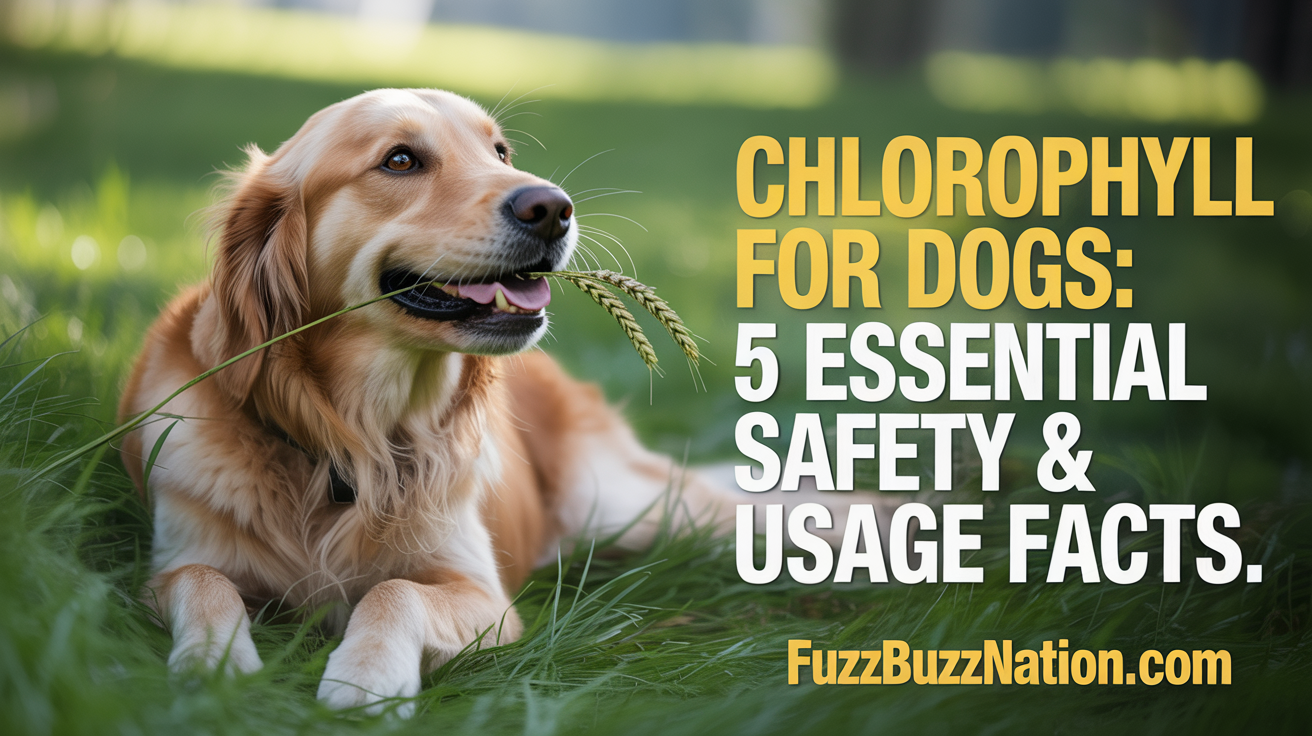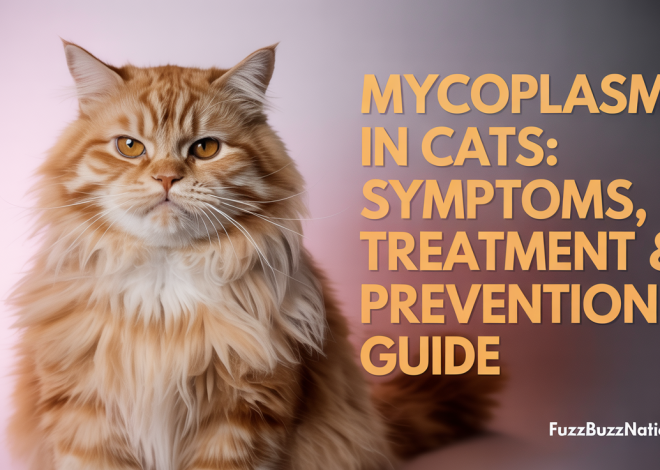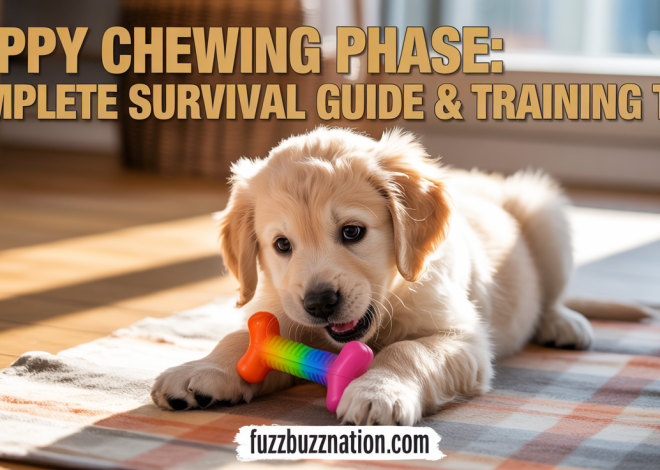
Chlorophyll for Dogs: Benefits, Risks & Vet-Approved Usage Tips
Understanding chlorophyll supplements for dogs requires recognizing that while this natural compound is generally safe, it should only be used under veterinary guidance with proper dosing and quality considerations. After researching chlorophyll supplementation for three of my own dogs over four years and consulting with veterinary professionals about its use in rescue dogs, I’ve learned which situations may benefit from chlorophyll supplementation and which safety protocols ensure responsible use.
The essential answer: Chlorophyll is generally safe for dogs when properly dosed and sourced, primarily used for reducing body odor and supporting digestive health. However, like all supplements, it requires veterinary approval, quality sourcing, and proper administration to avoid adverse effects or interactions with medications.
Most dogs don’t require chlorophyll supplementation when fed appropriate diets, but specific situations may warrant its use under professional guidance for targeted health support.
Important Veterinary Disclaimer: This information is for educational purposes only and does not replace professional veterinary advice. Always consult your veterinarian before giving any supplements to your dog. Chlorophyll can interact with medications and may not be appropriate for all dogs. Professional guidance ensures safe and effective use.
Fact 1: Chlorophyll Is a Natural Plant Compound with Potential Health Benefits
Understanding What Chlorophyll Is
Chlorophyll is the green pigment found in plants that enables photosynthesis, converting sunlight into energy. The chlorophyll used in supplements is typically derived from alfalfa, spinach, or other leafy green plants and processed into liquid or powder forms.
The compound that makes chlorophyll useful as a supplement is actually chlorophyllin, a semi-synthetic derivative that’s more stable and absorbable than natural chlorophyll. This processed form maintains many of the beneficial properties while being more suitable for supplementation.
My research into chlorophyll supplementation revealed that dogs can obtain small amounts naturally through consuming grass and green vegetables, but therapeutic levels typically require concentrated supplements designed specifically for canine use.
The molecular structure of chlorophyll is similar to hemoglobin in blood, leading to theories about its potential benefits for oxygenation and circulation, though these effects are not definitively proven in canine studies.
Natural Sources vs. Supplements
Dogs naturally consume small amounts of chlorophyll when they eat grass, which is normal behavior that may help with digestive upset or nutrient supplementation. However, grass-eating provides minimal chlorophyll compared to concentrated supplements.
Green vegetables like spinach, kale, and broccoli contain chlorophyll, but dogs would need to consume large quantities to achieve therapeutic levels, making these foods impractical as primary chlorophyll sources.
My consultation with a holistic veterinarian revealed that commercial chlorophyll supplements designed for pets provide standardized, measured doses that ensure consistency and safety compared to trying to achieve therapeutic levels through food alone.
The advantage of supplements lies in precise dosing and quality control, though they should never replace a balanced diet that includes appropriate vegetables and nutrients.
Fact 2: Primary Uses Include Odor Control and Digestive Support
Body Odor and Breath Freshening
Chlorophyll supplementation is most commonly used to reduce body odor and improve breath freshness in dogs. The compound may help neutralize odors from within the digestive system rather than just masking them externally.
My experience using chlorophyll with my senior rescue dog showed noticeable improvement in her overall body odor within two weeks of consistent supplementation, though individual results vary significantly between dogs.
The odor-reducing effects may be particularly beneficial for dogs with skin conditions, digestive issues, or those who simply have stronger natural odors that affect household comfort.
However, persistent bad breath or body odor can indicate underlying health problems that require veterinary evaluation rather than just supplementation to mask symptoms.
Digestive Health Support
Some veterinarians recommend chlorophyll for digestive support, particularly for dogs with sensitive stomachs or irregular bowel movements. The compound may help maintain healthy gut bacteria balance.
The potential digestive benefits include supporting normal bowel function and potentially reducing digestive inflammation, though scientific evidence specific to dogs remains limited.
My veterinary consultations indicated that chlorophyll might be helpful as part of comprehensive digestive support protocols, but it shouldn’t be used as a standalone treatment for serious digestive disorders.
Any digestive issues warranting chlorophyll supplementation should be properly diagnosed and monitored by veterinary professionals to ensure underlying problems receive appropriate treatment.
Fact 3: Proper Dosing and Administration Are Critical for Safety
Veterinary-Approved Dosing Guidelines
Chlorophyll dosing for dogs typically ranges from 1-4 mg per pound of body weight daily, but exact amounts should always be determined by veterinary professionals based on individual dog needs and health status.
Starting with the lowest effective dose helps assess tolerance and prevents adverse reactions. My experience showed that gradual introduction over several days helps identify any sensitivity issues before reaching full therapeutic doses.
Overdosing can cause digestive upset, changes in stool color (green), or other adverse effects, making precise measurement and adherence to recommended doses essential for safe use.
Different chlorophyll products have varying concentrations, requiring careful attention to specific product instructions and veterinary guidance for proper dosing calculations.
Administration Methods and Timing
Liquid chlorophyll supplements can be mixed with food or given directly, though mixing with food often improves palatability and reduces the risk of stomach upset from concentrated doses.
Powder forms require careful measurement and thorough mixing to ensure even distribution and prevent dogs from consuming concentrated amounts that might cause digestive upset.
My supplementation routine involves giving chlorophyll with the morning meal to allow for observation throughout the day and to minimize any potential stomach upset that might occur on an empty stomach.
Consistency in timing and administration method helps maintain steady levels in the system and makes it easier to monitor for any adverse reactions or beneficial effects.
Fact 4: Quality and Source Selection Impact Safety and Effectiveness
Choosing High-Quality Supplements
Pet-specific chlorophyll supplements undergo formulation and testing designed for canine physiology and safety, making them preferable to human supplements that may contain inappropriate additives or concentrations.
Third-party testing and quality certifications provide assurance about purity, potency, and absence of contaminants that could harm dogs. Look for products with clear labeling of chlorophyll content and manufacturing standards.
My research into supplement quality revealed significant variations between brands in potency, purity, and consistency, making brand reputation and veterinary recommendations important factors in product selection.
Organic sources and reputable manufacturers typically provide higher quality products with better safety profiles, though these may cost more than generic alternatives.
Avoiding Potentially Harmful Additives
Some chlorophyll supplements contain artificial colors, flavors, preservatives, or sweeteners that may be inappropriate or harmful for dogs. Always check ingredient lists for dog-safe components only.
Xylitol and other artificial sweeteners commonly found in human supplements are toxic to dogs and can cause life-threatening reactions. Never use human chlorophyll products without veterinary approval.
My supplement selection process involves reading all ingredients carefully and consulting with veterinarians about the safety of any additives or preservatives included in specific products.
Simple formulations with minimal additives typically provide safer options for dogs, reducing the risk of adverse reactions to unnecessary ingredients.
Fact 5: Potential Side Effects and Contraindications Require Monitoring
Common Side Effects and Monitoring
Green-colored stools are the most common side effect of chlorophyll supplementation and indicate the supplement is being processed through the digestive system. This color change is harmless but can be alarming if unexpected.
Digestive upset including loose stools, gas, or stomach discomfort may occur, particularly when starting supplementation or if doses are too high. These effects often resolve with dose adjustment or gradual introduction.
My experience monitoring dogs on chlorophyll showed that most side effects are mild and resolve quickly with proper dose adjustment, but any persistent adverse effects warrant discontinuation and veterinary consultation.
Changes in appetite, energy levels, or behavior should be reported to veterinarians immediately, as these may indicate sensitivity or interactions with other treatments.
Drug Interactions and Contraindications
Chlorophyll may interact with certain medications, particularly blood thinners or medications that affect blood clotting. Dogs on any medications require veterinary approval before starting chlorophyll supplementation.
Photosensitizing medications combined with chlorophyll may increase sensitivity to sunlight, potentially causing skin reactions in dogs who spend significant time outdoors.
My veterinary consultations emphasized that dogs with bleeding disorders, those scheduled for surgery, or those taking multiple medications need careful evaluation before chlorophyll supplementation begins.
Pregnant or nursing dogs should not receive chlorophyll supplements without specific veterinary approval, as effects on reproduction and development are not well-studied in canines.
When Chlorophyll Supplementation May Be Beneficial
Specific Health Situations
Dogs with chronic bad breath or body odor that persists despite good hygiene and dental care may benefit from chlorophyll supplementation as part of a comprehensive health assessment and treatment plan.
Senior dogs or those with digestive sensitivities might find chlorophyll helpful for maintaining digestive comfort, though underlying causes should always be investigated and treated appropriately.
My rescue dog experience included several cases where chlorophyll was recommended as part of overall health support during recovery from neglect or poor nutrition, always under veterinary supervision.
Dogs with certain skin conditions or those producing unusual odors may benefit from internal odor control while addressing root causes through appropriate medical treatment.
Integration with Overall Health Care
Chlorophyll works best as part of comprehensive health care including proper nutrition, regular veterinary care, and appropriate treatment of any underlying health conditions causing odor or digestive issues.
The supplement should complement, not replace, proper dental care, regular grooming, and high-quality nutrition that forms the foundation of good health and odor control.
My holistic approach to dog health includes chlorophyll as one tool among many, with emphasis on addressing root causes rather than just managing symptoms through supplementation.
Regular veterinary monitoring ensures that chlorophyll supplementation continues to be appropriate and beneficial as dogs age or if health conditions change.
Alternative Approaches to Common Chlorophyll Uses
Natural Odor Control Methods
Regular bathing with appropriate shampoos, proper dental care including brushing and dental treats, and high-quality nutrition often address odor issues without requiring supplementation.
Environmental factors including clean bedding, regular grooming, and maintaining clean living spaces contribute significantly to odor control and may eliminate the need for supplements.
My odor management strategy focuses first on hygiene and nutrition, using supplements only when these fundamental approaches don’t fully address persistent odor issues.
Some dogs benefit from dietary changes including reduced fish-based foods or addition of fresh vegetables that naturally support digestive health and odor control.
Digestive Health Alternatives
Probiotics designed for dogs often provide more targeted digestive support than chlorophyll, particularly for dogs with specific digestive imbalances or sensitivities.
High-quality, easily digestible foods with appropriate fiber content support healthy digestion and may eliminate the need for digestive supplements in many dogs.
My approach to digestive health includes evaluating diet quality, feeding schedules, and stress factors before adding supplements, ensuring that basic needs are met first.
Regular exercise, consistent routines, and stress management often improve digestive function naturally without requiring supplemental intervention.
Cost Considerations and Value Assessment
Supplement Costs vs. Benefits
Quality chlorophyll supplements typically cost $15-30 monthly for average-sized dogs, making cost-effectiveness dependent on the severity of issues being addressed and the availability of alternative solutions.
Comparing supplement costs to veterinary visits for odor or digestive issues may favor supplementation in some cases, but proper diagnosis should always precede supplement use.
My cost analysis includes considering whether underlying issues require veterinary treatment regardless of supplementation, making supplements an addition to rather than replacement for necessary medical care.
The value proposition improves when chlorophyll successfully addresses specific issues that significantly impact quality of life for both dogs and their families.
Budgeting for Quality Products
Higher-quality supplements with better manufacturing standards and purity typically cost more but may provide better results and safety profiles than cheaper alternatives.
Bulk purchasing or subscription services may reduce costs for long-term supplementation, though expiration dates and storage requirements should be considered.
My budgeting approach includes setting aside funds for quality supplements while maintaining emergency funds for veterinary care, recognizing that supplements support but don’t replace professional health care.
The investment in quality supplements often proves worthwhile through better results and reduced risk of adverse effects compared to cheaper alternatives.
Professional Guidance and Monitoring Protocols
Working with Veterinary Professionals
Initial consultation should include discussion of specific goals for chlorophyll supplementation, current health status, medications, and any previous supplement experiences or sensitivities.
Regular follow-up appointments help monitor effectiveness, adjust dosing if necessary, and ensure continued appropriateness of supplementation as health conditions change.
My veterinary relationships include open communication about all supplements, ensuring that all health care providers have complete information for optimal treatment planning.
Documentation of supplement use, dosing, and observed effects helps veterinarians make informed recommendations about continuation, modification, or discontinuation.
Monitoring and Adjustment Protocols
Establish baseline measurements of the issues chlorophyll is intended to address, such as odor levels or digestive function, to objectively assess improvement over time.
Weekly monitoring during the first month helps identify optimal dosing and detect any adverse effects early, allowing for prompt adjustment before problems become serious.
My monitoring routine includes keeping detailed records of supplement administration, any observed changes, and any concerns that arise during supplementation periods.
Regular reassessment ensures that chlorophyll supplementation continues to be beneficial and appropriate as dogs age or if health conditions evolve.
Frequently Asked Questions
How long does it take to see results from chlorophyll supplementation in dogs?
Most dogs show initial improvements in odor control within 1-2 weeks of consistent supplementation, with maximum benefits typically seen after 4-6 weeks of regular use. Digestive benefits may take longer to become apparent, sometimes requiring 6-8 weeks of consistent use. Individual response varies significantly based on the dog’s size, health status, and the specific issues being addressed. Always give chlorophyll time to work while monitoring for any adverse effects during the initial weeks.
Can I give my dog human chlorophyll supplements?
Human chlorophyll supplements should never be given to dogs without specific veterinary approval, as they often contain ingredients toxic to dogs like xylitol or inappropriate concentrations for canine physiology. Pet-specific formulations are designed for dog safety and proper dosing. Even “natural” human supplements may contain additives unsuitable for dogs. Always choose products specifically formulated for pets and consult your veterinarian before starting any supplementation.
Are there any dogs who should never receive chlorophyll supplements?
Dogs taking blood-thinning medications, those with bleeding disorders, pregnant or nursing females, and puppies under 6 months should not receive chlorophyll without specific veterinary guidance. Dogs scheduled for surgery should discontinue chlorophyll at least one week prior. Those with known plant allergies or previous adverse reactions to supplements need careful evaluation. Always consult your veterinarian before starting chlorophyll if your dog has any health conditions or takes medications.
What’s the difference between chlorophyll and chlorophyllin in dog supplements?
Chlorophyllin is a semi-synthetic, water-soluble derivative of natural chlorophyll that’s more stable and better absorbed than natural chlorophyll. Most pet supplements contain chlorophyllin because it’s more effective and has a longer shelf life. Both forms are generally safe for dogs when properly dosed, but chlorophyllin typically provides more consistent results. The choice between them should be based on veterinary recommendations and specific product quality rather than the type of chlorophyll alone.
Can chlorophyll supplements replace good dental care for bad breath?
No, chlorophyll should never replace proper dental care for addressing bad breath in dogs. While chlorophyll may help reduce odors, persistent bad breath often indicates dental disease, infections, or other health problems requiring professional treatment. Regular teeth brushing, dental cleanings, and veterinary dental care remain essential for oral health. Use chlorophyll as a supportive measure alongside, not instead of, comprehensive dental care and professional evaluation of oral health issues.
Making Informed Decisions About Chlorophyll Supplementation
Understanding chlorophyll for dogs helps you make educated decisions about whether this supplement might benefit your pet’s health while ensuring safe and effective use under proper veterinary guidance.
The key to successful supplementation lies in realistic expectations, quality product selection, appropriate dosing, and regular monitoring for both beneficial effects and potential adverse reactions.
Remember that supplements like chlorophyll work best as part of comprehensive health care that includes proper nutrition, regular veterinary care, and attention to hygiene and environmental factors that affect your dog’s overall health.
When used appropriately with professional guidance, chlorophyll can be a valuable tool for supporting specific aspects of your dog’s health while maintaining focus on the fundamental elements of good care that form the foundation of canine wellness.


